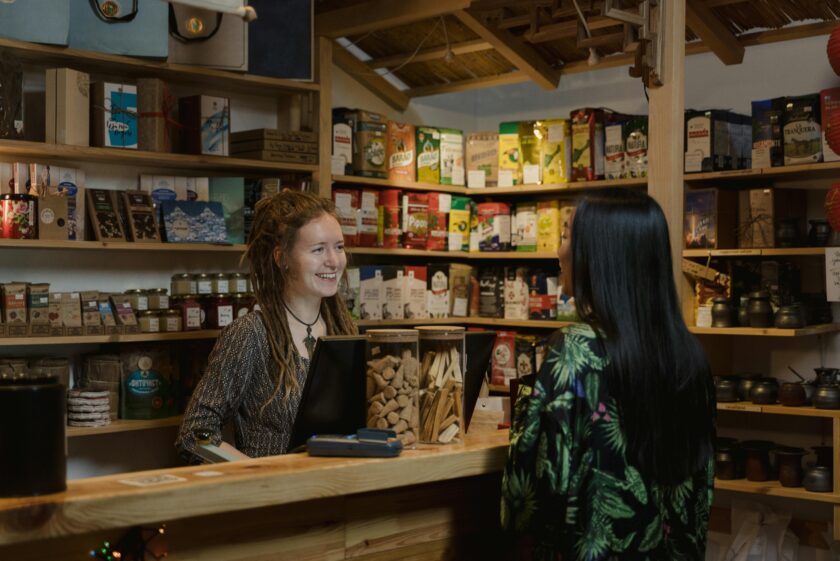
9 Tips to Open a Successful Grocery Store
Launching an independent grocery store is both exciting and challenging. With rising competition and evolving consumer expectations, having expert guidance can make all the difference. At 360 Retail Management, we’ve empowered hundreds of entrepreneurs to turn their grocery business ideas into thriving operations. Drawing on our decades of hands-on experience, we’ve distilled the most impactful strategies into these 9 practical tips designed to help you succeed from day one.
1. Conduct Thorough Market Research
Understanding your market is the foundation of success. According to Nielsen, grocers who conduct comprehensive market analysis before launch see significantly better first-year performance. Market research can be done by:
- Demographics – Age, income, ethnicity
- Competitors – Pricing, products, services
- Customer feedback – Surveys, focus groups
- Traffic – Footfall, vehicle count
- Trends – Product and shopping habits
- Site check – Zoning, access, parking
- Psychographics – Lifestyle, values
How we do it differently: Commission a professional market study that includes demographic analysis within a 3-mile radius, competitor pricing analysis, and at least 200 customer surveys to identify unmet needs. Budgeting $5,000–$8,000 for this research typically yields a 5x return through optimized store planning.
2. Develop a Solid Business Plan
Differentiation isn’t optional; it’s essential. The Food Marketing Institute found that distinct brand positioning yields greater market share. Key elements include:
- Mission & vision – Store’s purpose and goals
- Target market – Who you serve
- USP – What makes you different
- Product mix – Key categories to offer
- Pricing – Strategy vs competitors
- Marketing – How you’ll attract customers
- Operations – Staffing and workflow
- Financials – Costs, revenue, breakeven
How we do it differently: Identify at least three specific ways your store will differ from competitors, whether through specialized product selection (like organic, international, or local foods), superior service models, or technological innovation. Test these concepts with focus groups before finalizing your business model.
3. Secure Adequate Funding
Undercapitalization is a leading cause of grocery store failure. Supermarket News estimates that successful independent grocery startups typically require $500,000 to $1 million in initial capital.
How we do it differently: Secure funding that covers 100% of startup costs plus at least 8 months of operating expenses. Work with lenders experienced in grocery retail, like Live Oak Bank, or seek equipment financing through organizations like National Cooperative Bank.
4. Choose the Right Location
Location significantly impacts grocery store performance. Research by JLL Retail shows that visibility, accessibility, and proximity to complementary businesses can increase foot traffic.
How we do it differently: Prioritize locations with at least 15,000 cars passing daily, parking ratios of 5 spaces per 1,000 square feet, and demographics matching your target customer profile. Negotiate lease terms that include at least 6 months of reduced rent during store buildout and initial operation.
5. Build Strong Supplier Relationships
Store layout directly affects sales performance. According to McKinsey & Company, optimized grocery store layouts can increase sales per square foot.
How we do it differently: Work with grocery-specialized designers to create planograms that maximize impulse purchases and cross-merchandising opportunities. Position your highest-margin departments (typically prepared foods, bakery, and produce) in prime visibility areas. Allocate 35–40% of floor space to fresh departments to drive repeat visits.
6. Invest in Modern Technology
Supply chain efficiency directly impacts margins. Progressive Grocer reports that independent retailers who join purchasing groups achieve better costs of goods sold. Smart tech investments include:
- Integrated POS – Faster checkout, real-time data
- Inventory systems – Reduce stockouts, cut waste
- Loyalty programs – Boost repeat purchases
- Mobile ordering – Tap into digital demand
- Vendor portals – Simplify reordering
- Data analytics – Smarter decisions, better margins
- Cloud backups – Protect operations from downtime
How we do it differently: Join a grocery wholesale group like Associated Wholesale Grocers (AWG) or UNFI to access competitive pricing. Supplement with direct-store-delivery (DSD) relationships with local producers to create unique offerings. Implement a perpetual inventory system that maintains high in-stock rates while minimizing carrying costs.
7. Focus on Fresh Departments
Modern grocery retail requires technological infrastructure. RIS News reports that grocers with integrated POS, inventory, and customer loyalty systems achieve higher average transaction values.
How we do it differently: Implement an all-in-one retail management system like NCR Counterpoint or IT Retail that connects point-of-sale, inventory, customer relationship management, and accounting. Budget a percentage of annual revenue for ongoing technology investment and upgrades.
8. Automate Your Newsletter Delivery Process
Fresh departments drive customer loyalty. Research from Deloitte shows that grocery shoppers who highly rate a store’s fresh departments visit more frequently.
How we do it differently: Dedicate a significant portion of your merchandising budget to fresh departments. Establish relationships with local farmers for seasonal produce, train staff in proper handling techniques, and implement a strict “day-coded” rotation system to maintain quality. Consider an open-kitchen concept for prepared foods to showcase freshness and quality.
9. Train and Retain Quality Staff
Employee knowledge directly impacts customer satisfaction. The National Grocers Association found that stores with structured training programs report higher customer satisfaction scores.
How we do it differently: Develop a training program requiring extensive hours for new employees covering product knowledge, food safety, customer service, and operational procedures. Partner with organizations like Food Safety Training Solutions for certification programs and implement a “train-the-trainer” model to create internal expertise.
Why Choose 360 Retail Management?
We don’t just consult, we partner with you. From initial concept to opening day and beyond, 360 Retail Management provides full-spectrum support: market research, site selection, financial planning, store design, technology integration, supplier connections, merchandising, and training. With 360° of expertise, we don’t just help you open your store—we help you grow it sustainably and profitably.
💼 Ready to turn your grocery vision into reality?
Contact 360 Retail Management today for a free strategy session and customized project roadmap.



